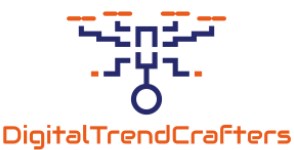When building a modern gaming PC, one of the crucial components to consider is the number of SATA connectors available. SATA (Serial Advanced Technology Attachment) is an interface used to connect various storage devices to the motherboard. As games and software become more complex and storage-intensive, understanding how many SATA connectors you will need can significantly impact your gaming experience. In this article, we will explore the requirements for SATA connectors and provide guidance to ensure that your gaming build meets all of your storage needs.
| Device Type | SATA Connectors Needed |
|---|---|
| Solid State Drive (SSD) | 1 – 2 |
| Hard Disk Drive (HDD) | 1 – 2 |
| Optical Drive (DVD/Blu-ray) | 1 |
| M.2 NVMe SSD (if applicable) | 0 |
Understanding SATA Connectors
SATA connectors are responsible for enabling communication between storage devices and the motherboard. The modern standard is SATA III, which supports data transfer rates of up to 6 Gbps. There are a few considerations when calculating how many SATA connectors you need:
- Type of Storage Drives: Determine the types of drives you will be using. Most builds will include an SSD for the operating system and an HDD for additional storage.
- Future Upgrades: Consider future storage needs. You might want to add more SSDs or HDDs later on.
- Motherboard Layout: Review the layout of your motherboard to identify how many SATA ports are available.
How Many SATA Connectors Are Required?
1. Solid State Drives (SSDs)
SSDs are becoming the standard for modern gaming PCs due to their faster data transfer speeds compared to traditional HDDs. When building a system, it’s common to use at least one SSD for the operating system and frequently played games to maximize load times.
2. Hard Disk Drives (HDDs)
HDDs offer larger capacities at a lower cost, making them ideal for storing large game libraries, media files, and backups. For most gaming setups, having one to two HDDs is sufficient.
3. Optical Drives
While they have become less common in gaming PCs, optical drives may still be relevant for certain users. If you want to include a DVD or Blu-ray drive, factor in an additional SATA connector.
Common Configurations
Let’s take a look at some common PC configurations to better understand the SATA connector requirements:
| Configuration | SSD(s) | HDD(s) | Optical Drive(s) | Total SATA Connectors Needed |
|---|---|---|---|---|
| Basic Gaming Setup | 1 x 500GB SSD | 1 x 2TB HDD | – | 2 |
| Mid-range Gaming Setup | 1 x 1TB SSD | 1 x 4TB HDD | 1 | 3 |
| High-end Gaming Setup | 2 x 1TB SSD | 2 x 4TB HDD | 1 | 5 |
| Advanced Streaming Setup | 2 x 2TB SSD | 1 x 8TB HDD | 1 | 4 |
Choosing the Right Motherboard
When selecting a motherboard, it’s vital to ensure it meets your needs regarding SATA connectors. Most modern motherboards come with a range of SATA ports, typically between 4 to 8. Here’s what to keep in mind:
- Port Count: Ensure your motherboard has enough ports for your current and future storage plans.
- Placement: Consider the physical layout of ports on the motherboard, allowing easy access to connectors.
- Speed Ratings: Confirm that the motherboard supports SATA III to take full advantage of SSD speeds.
Future-Proofing Your Setup
As technology continues to advance, the need for faster and larger storage options is increasing. M.2 NVMe SSDs are gaining popularity for their superior speed compared to traditional SATA devices. While M.2 drives do not utilize SATA connectors, having a motherboard with available M.2 slots opens up options for rapid data access.
When to Consider Additional Connectors
If you plan to incorporate RAID setups or multiple drives for enhanced performance, you may need additional SATA connectors. RAID can significantly improve read and write speeds, depending on your configuration. Always consider your intended use case and how that can affect the number of SATA connectors needed.
Conclusion
In summary, the number of SATA connectors required for a modern gaming PC largely depends on the storage configuration you choose. To have a seamless gaming experience, it is recommended that you plan for at least two SATA connectors, accommodating an SSD for your operating system and a potential HDD for additional storage. Always account for future expansion, and ensure your motherboard provides enough ports to suit all of your storage needs.
